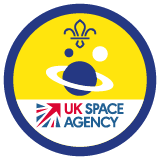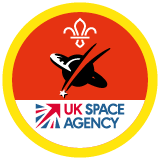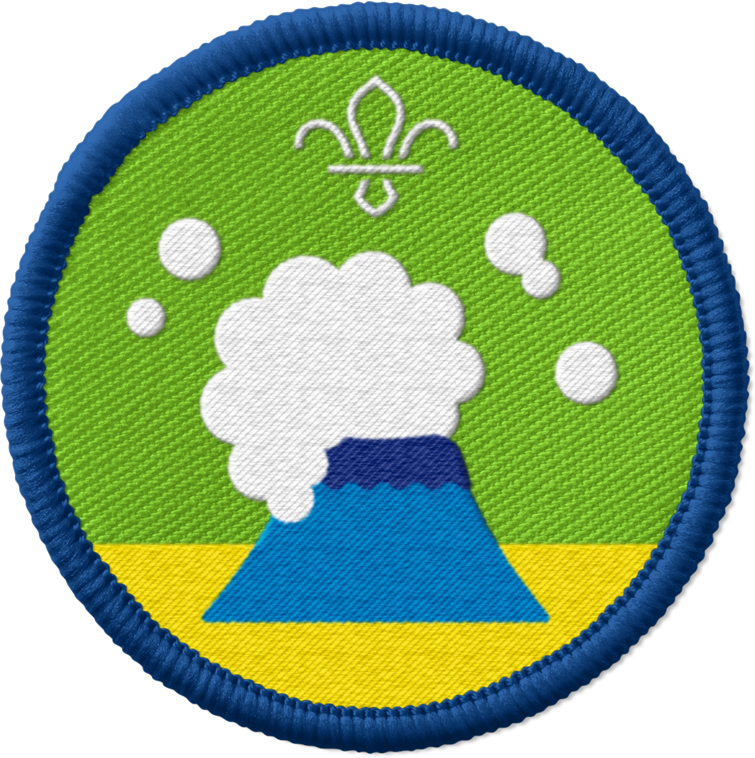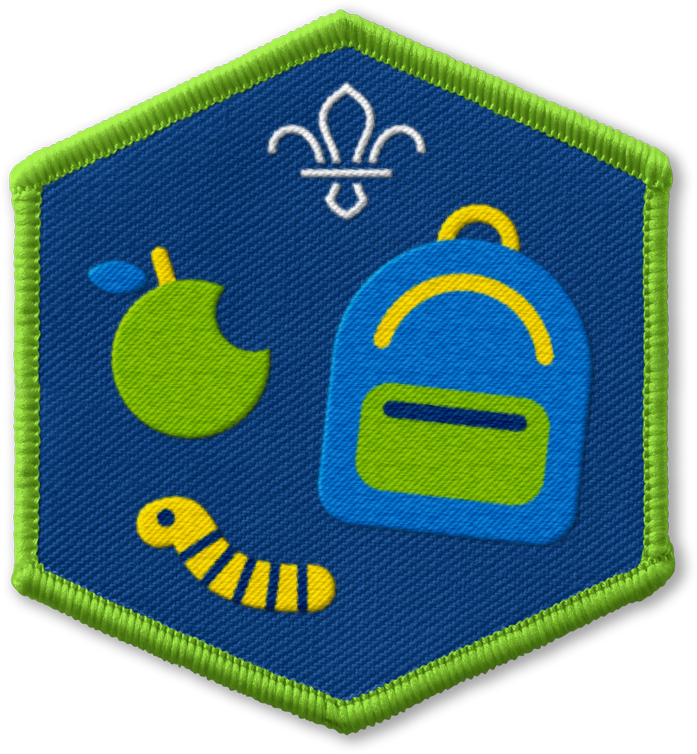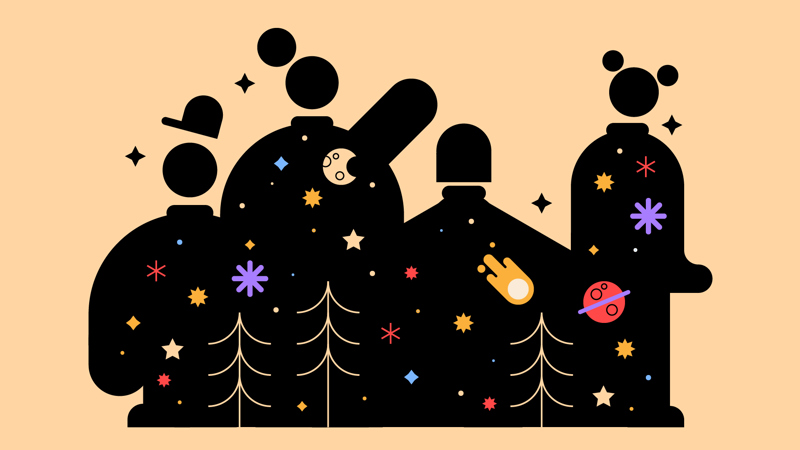
Eyes to the skies
You’ll need
- Weather appropriate clothing
- Torch or phone
- Snacks
- Warm drinks
- Binoculars
Before you begin
- Use the safety checklist to help you plan and risk assess your activity. Additional help to carry out your risk assessment, including examples can be found here. Don’t forget to make sure all young people and adults involved in the activity know how to take part safely.
- Make sure you’ll have enough adult helpers. You may need some parents and carers to help if you’re short on helpers.
Planing this activity
- Decide when you’ll go for your walk. Stars are best viewed on a clear night before or after a full Moon. Stars should start to appear around an hour after sunset.
- Decide where you’ll go on your walk. It’s best to find a dark spot away from lighting, such as a hillside, a clearing in a wood, or a park.
- Remind everyone to wear warm clothing – you may even want to take some blankets to keep warm under.
- Decide if you’ll take warm drinks and snacks to enjoy while you stargaze. Don’t forget to check for any allergies or dietary requirements.
- Decide how you’ll identify what you see. For example, you could use a website, such as In the Sky.
A short explanation of Norse Mythology
Observations of the stars and the sun are important for navigation, but also as a way of telling time. Vikings were aware of the difference of 'sun-time' and 'star-time' in understanding both what time of day it was and what time of year it was, depending on the placement of the stars in the sky above them. Many constellations had stories of their Norse mythology attached to them.
Vikings believed that, before the beginning of time, there were only two realms: Niflheim, a realm of mist and ice, and Muspelheim, the realm of fire. Between them was a void that was known as Ginnungagap. In this abyss, where hot and cold realms met, the burning frost turned into water drops and the water drops turned into life.
The first living being was Ymir, a giant, who was created from those life-giving drops of water, and whose death was brought about by Odin and his brothers. They then used Ymir’s body to create the universe.
The main Norse gods belong to a clan, called Æsir, and live in a place called Asgard. The most well known gods from this clan are Odin, Frigg, Thor, Loki, Balder, Hod, Heimdall and Tyr.
Space walk
- To begin with, everyone should talk about the sort of things they expect to see in the night sky. The person leading the activity could look online to see if any planets will be visible. To get you going, we've provided some things to look out for below. We have also provided a short explanation of Norse Mythology and their gods above.
- Everyone should travel to the stargazing spot. The group should stay together and use torches to light the way if they need to. Ask everyone to meet at the stargazing spot instead. If you decide to meet there, complete steps one and two once all participants have arrived.
Stargaze together
- Everyone should turn off their torches, and spend some time looking around and getting used to the dark. It can take up to 10 minutes for eyes to adjust; people could start to train their eyes by looking at nearby scenery, such as trees or each other’s faces.
- Once everyone’s used to the dark, they should look up at the sky. What can you see? Stars can be different shapes, sizes and colours. They look like they’re twinkling in the sky. Planets don’t look like they’re twinkling. Try to be as quiet as possible so that people can have better focus.
- Everyone should find a partner. Each person should try and spot a constellation and point it out to their partner.
- After a few minutes, pairs should join with another pair to make a small group of four. The pairs should show each other what they’ve discovered.
- Everyone should gather back together and share what they have discovered. What stories could people see in the stars above them? The person leading the activity could help everyone spot anything they may have missed.
- Your group could choose to enjoy a warm drink and snack together before they head back indoors.
Celestial superstars
Orion and Taurus
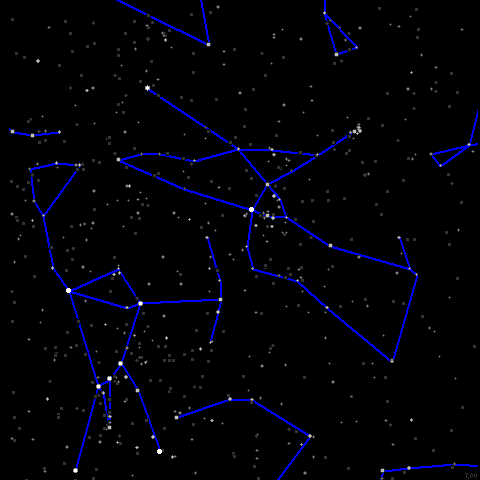
Ursa Major, Ursa Minor and the North Star
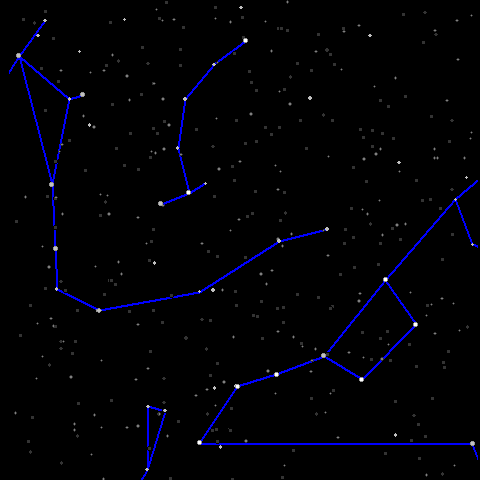
Start by looking for the three stars that make Orion’s belt. Orion’s belt was known as 'Fiskikarlar', or the fishermen, in Norse mythology. Up and to the right of Orion is Taurus the bull; you can spot him by looking for his big red eye, the star ‘Aldebaran’.
Ursa Major (also known as the Great Bear, Plough, Saucepan or Big Dipper) is one of the most recognisable shapes in the night sky, which may be why it has so many names. The two stars at the far right point towards the North Star, which forms part of Ursa Minor (also known as the Little Bear).
In Norse mythology Ursa Major was known as 'Karlsvagn', or the Man’s Chariot, and Ursa Minor was known as 'Kvennavagn', or the Woman’s Chariot. It is thought that these were representative of the Norse God, Thor, and the Queen of Asgard, Freya, riding their chariots. The North Star is also known as Polaris.
Swoon at the Moon

Did you know that of the 12 people who have walked on the Moon, 11 were Scouts?
What is the Moon?
- The Moon is thought to be 4.5 billion years old.
- Most scientists think that the Moon was created when a big object collided with Earth. The collision caused chunks of Earth to be thrown out into space. Over time, the chunks of Earth joined together to form the Moon.
- Unlike the Sun, the Moon doesn’t create any light. Moonlight is just sunlight reflecting on the Moon’s surface.
- Usually the Moon is a greyish-white, but it can change colour. A lunar eclipse causes a red Moon. A lunar eclipse occurs when the Moon moves into the Earth's shadow, so any sunlight is blocked from reaching the Moon. Dust, pollution, or volcanic ash sometimes causes the Moon to appear orange or even blue.
- The Moon affects the tides – this means that the Moon helps to create the waves you see in the sea or oceans.
What does it look like?
- The surface of the Moon is rough and uneven. It’s covered in craters, lava plains, mountains and pits, caused by rocks hitting its surface over many years.
- You might be able to see large dark patches on the Moon’s surface. Sometimes these are called the ‘seas of the Moon’. However, they aren’t full of water - they’re actually large pools of frozen lava.
What are the phases of the Moon?
The Moon is always changing; but don't worry, it's just a phase it's going through. As the Moon orbits the Earth, we see a different amount of the Moon reflecting the Sun’s light. This means that the Moon looks like it’s shape changes over time. However, it always remains a ball shape, and some parts are just in darkness so we can't see them. The different stages are called phases.
It takes 29.5 days for the moon to go through the eight key stages and complete a lunar cycle. The terms used to describe different phases of the Moon include:
- Waxing (when the Moon appears to be growing in size)
- Waning (when the Moon appears to be shrinking)
- Gibbous (when more than half of the Moon is illuminated)
Reflection
This activity was a chance to develop skills. Did anyone spot a constellation in the sky, and follow it with their eyes? Some people may have spotted Ursa Major, Ursa Minor, Orion or Taurus. Why is stargazing useful? In the past, stars helped people find where they were in the world. Now, we have maps, clocks and apps to help us – but it can be still useful to know about the stars and phases of the Moon when we’re out camping, for example.
This activity was also about valuing the outdoors. How did everyone feel about being outside without any lights? Some people may have felt exciting, and others may have felt nervous – both are OK. Being outside in the dark helps remind everyone that our world is amazing and that planet Earth is connected to the rest of the universe.
Safety
All activities must be safely managed. You must complete a thorough risk assessment and take appropriate steps to reduce risk. Use the safety checklist to help you plan and risk assess your activity. Always get approval for the activity, and have suitable supervision and an InTouch process.
- Outdoor activities
You must have permission to use the location. Always check the weather forecast, and inform parents and carers of any change in venue.
- Hiking and walking
Follow the guidance for activities in Terrain Zero, or the guidance for each the adventurous activity.
- Dark
Provide some light, so the environment isn’t completely dark. Everyone must be able to see others and move around the area safely.
- Visits away from your meeting place
Complete a thorough risk assessment and include hazards, such as roads, woodland, plants, animals, and bodies of water (for example, rivers, ponds, lakes, and seas). You’ll probably need more adult helpers than usual. Your risk assessment should include how many adults you need. The young people to adult ratios are a minimum requirement. When you do your risk assessment, you might decide that you need more adults than the ratio specifies. Think about extra equipment that you may need to take with you, such as high visibility clothing, a first aid kit, water, and waterproofs. Throughout the activity, watch out for changes in the weather and do regular headcounts.
People can try spotting other constellations. They could even join the stars they can see to make their own!
Find out more about the things people have spotted. How far away are they? When were they discovered?
Hold a stargazing party with star-themed food, snacks and star-themed music. You could dress up, have themed arts and crafts or even have a stargazing quiz. You could do this as part of a camp.
Make sure the place you’re planning to stargaze, and the route you’ll take to get there, is accessible for everyone.
All Scout activities should be inclusive and accessible.
Everyone could think about how they’d travel to the stars and planets they’ve seen. What would their spaceship look like? If everyone makes a model of their spaceship from recycling, this could count towards their Beavers Creative Activity Badge.
People could work in groups to teach everyone else about a constellation, including what it looks like, the reason behind its name and where to find it.
